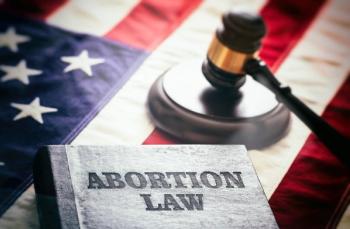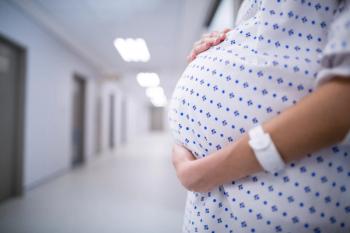
Vaginal microbiome may predict preterm birth
A new case control study examines whether looking at the vaginal microbiome can predict preterm birth. And, do women who work in fields with long hours and physical demands have a more difficult time becoming pregnant? Plus: Do oral contraceptives moderate arthritis outcomes?
Results of a case control study conducted by researchers from Stanford University show that the microorganisms on and in a woman’s reproductive tract-the microbiome-may impact her risk of preterm birth. The findings, published in
The investigators took weekly samples of microorganisms from the teeth and gums, saliva, reproductive tract, and stool from 49 women during pregnancy and monthly after birth. Fifteen of the women delivered preterm. More than 4,000 samples were analyzed, using linear mixed-effects modeling, medoid-based clustering, and Markov chain modeling. The goal was to characterize weekly variation in the vaginal, gut, and oral microbiota during and after pregnancy.
The microbiota at each of the anatomical sites remained remarkably stable during pregnancy (P<0.05 for trends over time). Prevalence of Lactobacillus-poor vaginal community state type (CST 4) was inversely correlated with gestational age at delivery (P=0.0039). Risk of preterm birth was higher in women with CST 4 plus an abundance of Gardnerella or Ureaplasma. That finding was validated with a set of 246 vaginal specimens from 9 women (4 of whom delivered preterm).
After delivery, most women had alterations in their vaginal microbiome characterized by a decrease in Lactobacillus species and an increase in diverse anaerobes such as Peptoniphilus, Prevotella, and Anaerococcus species. The alterations were not associated with gestational age at delivery and persisted for up to 1 year.
Given the overlap between communities sampled early and late in pregnancy at all body sites, the authors said, “the progression of pregnancy is not associated with a dramatic remodeling of the diversity and composition of a woman’s indigenous microbiota.” After birth, the authors noted, the vaginal microbiome becomes more similar to the one in the gut. The impact of that shift is unknown, but the investigators hypothesize that it may affect a subsequent pregnancy if conception occurs soon after delivery because a short interpregnancy interval is associated with an increased risk of preterm birth.
How does work impact the chances of getting pregnant?
A new analysis of data from the Nurses’ Health Study suggests that a woman’s work schedule may influence her ability to get pregnant. The findings, from a cohort of nurses, were reported in
The Nurses’ Health Study 3 cohort included 1739 women, 93% of whom were Caucasian with a median age of 33 years. All were employed as nurses and trying to get pregnant during the study period, which was from 2010 to 2014.
Information on the women’s work schedules and physical labor was self-reported on a baseline questionnaire. Every 6 months thereafter, the women reported on the duration of their ongoing pregnancy attempts. Mutivariable accelerated failure time models were used to estimate time ratios (TR) and 95% confidence intervals (CIs).
After 12 and 24 months, the estimated proportions of women who did not get pregnant were 16% and 5%, respectively. None of their shift work patterns were associated with how long it took the women to get pregnant. However, it took women who worked more than 40 hours per week 20% longer to become pregnant than those who worked 21 to 40 hours per week (95% CI, 7% to 35%; P-trend=0.005).
Moving more than 25 lb or lifting more than 15 times per day also was associated with a longer time to pregnancy (adjusted TR=1.49; 95% CI 1.20 to 1.85) compared to women who never lifted or moved heavy loads (P-trend=0.002). The association between heavy moving and lifting and duration of pregnancy attempt was more pronounced in the women who were overweight or obese (body mass index [BMI] <25; TR=1.17; 95% CI 0.88 to 1.56 BMI≥25; TR=2.03; 95% CI 1.48 to 2.79; P-interaction=0.007).
The authors concluded that in a cohort of nurses who wanted to become pregnant, working more than 40 hours per week and lifting a heavy load or lifting loads more frequently were associated with reduced fecundity.
Could OCs moderate arthritis outcomes?
Oral contraceptives (OCs) may reduce the impact of inflammatory arthritis, according to a new study of patient-reported outcomes in
Funded by Pfizer, Germany, the researchers studied a cohort of 273 women aged 18 to 60 who had early inflammatory arthritis and had never taken hormone replacement therapy. Over a period of 2 years, they assessed associations between OC exposure-current/past/never-and disease activity, treatment, and patient outcomes, measured by Rheumatoid Arthritis Impact of Disease Score (RAID), the Rheumatoid Arthritis Disease Activity Index (RADAI), the Profile of Mood and Discomfort (PROFAD) and the Hannover Functional Assessment (FFbH). Models were adjusted for age, body mass index, smoking, education, and parity.
Of the women, 18% had never used OCs, 63% had used OCs at some time in the past, and 19% were currently using them. After adjustment, current/past use of OCs was associated with better RAID, RADAI, PROFAD, and FFbH scores at 12 months (all P<0.05) than was never-use of OCs. Longitudinally, the average RAID scores were significantly better in those who used OCs, whether that use was current or in the past (P<0.001). More women who never used OCs took glucocorticoids than did women who currently used OCs or had used them in the past (P=0.08), a finding that was particularly true among those with impaired function (FFbH<70: OR 4.2 [1.6-11]).
The researchers concluded that past or current use of OCs appears to ameliorate patient-reported outcomes in inflammatory arthritis. They speculated that the effects may be induced via central nervous system pathways rather than through suppression of peripheral inflammation.
Newsletter
Get the latest clinical updates, case studies, and expert commentary in obstetric and gynecologic care. Sign up now to stay informed.









